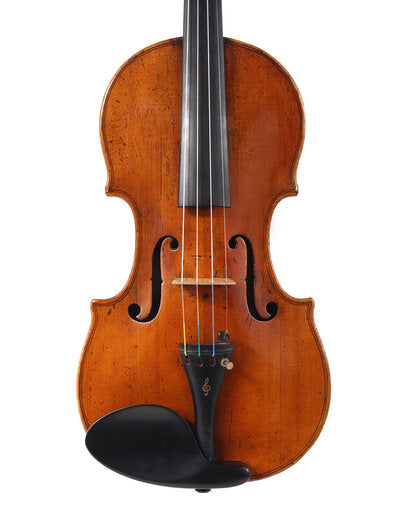Violin Setup and Adjustments: Bridge, Soundpost, and String Height Optimization
Share
Proper violin setup is the foundation of exceptional sound quality and playability. Even the finest instrument crafted from premium woods can fail to reach its potential without expert setup and adjustment. The relationship between bridge positioning, soundpost placement, and string height optimization determines how your violin responds to your bow, projects sound, and feels under your fingers. Understanding these critical elements helps you maintain your instrument's performance and recognize when professional adjustment is needed.
What is Violin Setup and Why It Matters
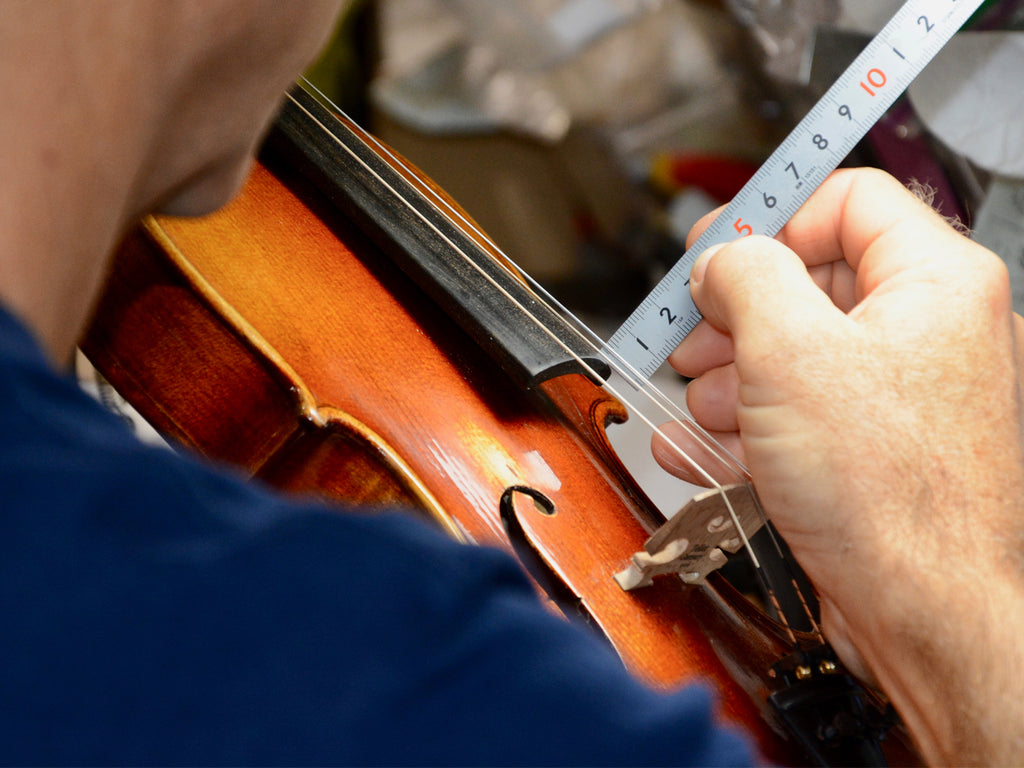
Violin setup encompasses all the adjustable elements that affect an instrument's sound and playability. Unlike the fixed wooden body, components like the bridge, soundpost, strings, and fingerboard can be precisely adjusted to optimize performance. Professional setup work can transform an average-sounding violin into an exceptional instrument, while poor setup can render even the finest violin unplayable.
The importance of proper setup extends beyond sound quality to include:
-
Playability and comfort for extended practice sessions
-
Intonation accuracy across all positions
-
Dynamic response to subtle bow techniques
-
Protection of the instrument from damage
-
Longevity of strings and other components
Every violin, from student instruments to professional concert violins, benefits from expert setup. The precision required for optimal adjustment makes this work best left to experienced luthiers and violin technicians who understand the complex interactions between all setup components.
The Violin Bridge: Your Instrument's Sound Gateway
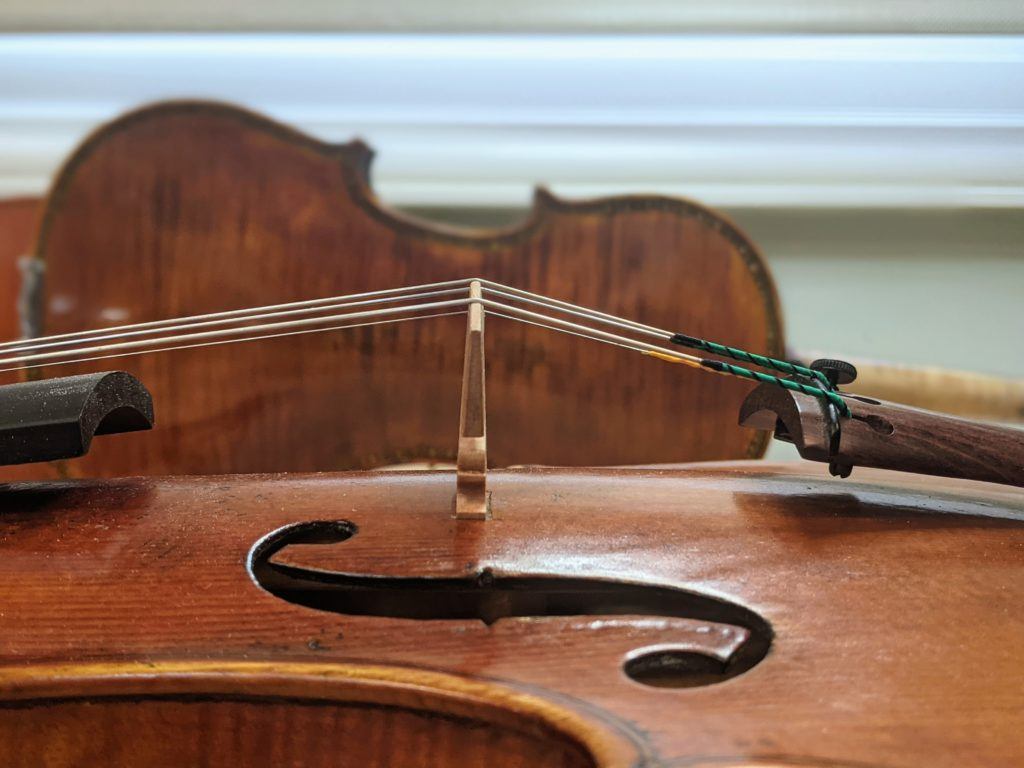
Bridge Fundamentals and Function
The violin bridge serves as the primary transmission point for string vibrations to the instrument body. This seemingly simple piece of carved maple performs multiple critical functions:
-
Vibration transmission from strings to soundboard
-
String spacing and height regulation
-
Tonal filtering that shapes harmonic content
-
Structural support for string tension
Bridge wood selection and carving technique significantly impact sound quality. Premium bridges use aged European maple with tight, straight grain patterns. The bridge's feet must perfectly match the violin's top curvature, ensuring maximum contact area for efficient sound transmission.
Bridge Positioning and Its Impact on Sound
Bridge placement affects multiple aspects of violin performance. Moving the bridge even millimeters can alter:
Tonal Balance: Forward placement (toward the fingerboard) typically produces warmer, more fundamental-heavy tone, while backward placement enhances brilliance and projection.
String Tension and Feel: Bridge position affects the speaking length of strings, influencing both pitch and playing tension.
Projection: Optimal placement maximizes the violin's ability to project sound in performance situations.
Professional setup includes precise bridge positioning based on the instrument's individual characteristics and the player's needs. The traditional placement positions the bridge feet between the f-hole notches, but fine adjustments optimize performance for each specific violin.
Bridge Height and Curvature Adjustment
Bridge height directly affects string height (action) and playability. Too high creates difficult playing conditions, while too low causes string buzzing and poor tone production. Professional bridge adjustment involves:
-
Precise height measurement at each string position
-
Curvature matching to fingerboard radius
-
Foot fitting to soundboard contours
-
String spacing optimization
-
Fine-tuning for optimal balance between playability and tone
Quality bridge work requires specialized tools and experience. Attempting bridge adjustment without proper knowledge risks damage to both bridge and instrument.
The Soundpost: The Soul of Your Violin
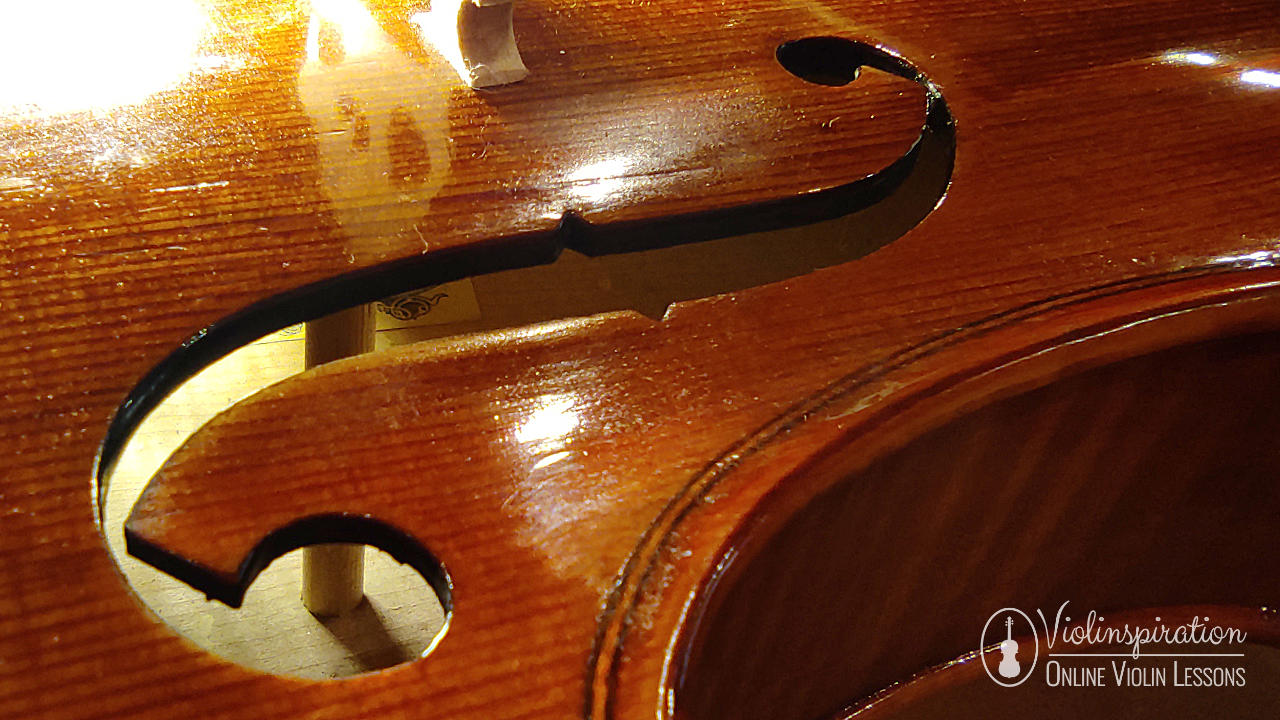
Understanding Soundpost Function
The soundpost, traditionally called the "soul" of the violin, appears deceptively simple but plays a crucial role in sound production. This small spruce dowel wedged between the violin's top and back:
-
Transmits vibrations between top and back plates
-
Provides structural support against string tension
-
Influences tonal balance across frequency ranges
-
Affects projection and volume capabilities
Soundpost wood selection mirrors that of the violin top – straight-grained spruce chosen for optimal transmission properties. The post must fit precisely between top and back plates without gaps or excessive pressure.
Soundpost Positioning and Tonal Impact
Soundpost placement requires extraordinary precision, with adjustments measured in millimeters creating dramatic tonal changes. Professional soundpost adjustment considers:
Traditional Placement: Typically positioned behind the treble bridge foot, approximately 3-5mm toward the tailpiece and slightly toward the center of the instrument.
Fine Positioning: Minute adjustments forward, backward, or laterally can:
-
Enhance or reduce brilliance
-
Improve balance between strings
-
Increase or decrease projection
-
Affect response speed and dynamics
Seasonal Adjustments: Wood movement from humidity changes can affect soundpost fit, requiring periodic repositioning for optimal performance.
Signs Your Soundpost Needs Attention
Several indicators suggest soundpost adjustment or replacement is needed:
-
Muffled or unclear tone quality
-
Poor projection or volume
-
String balance issues (some strings significantly louder/softer)
-
Visible soundpost movement inside the instrument
-
Buzzing sounds during playing
-
Sudden tonal changes after temperature/humidity shifts
Professional soundpost work requires specialized tools and extensive experience. Never attempt soundpost adjustment yourself, as improper technique can cause serious instrument damage.
String Height Optimization: The Key to Playability
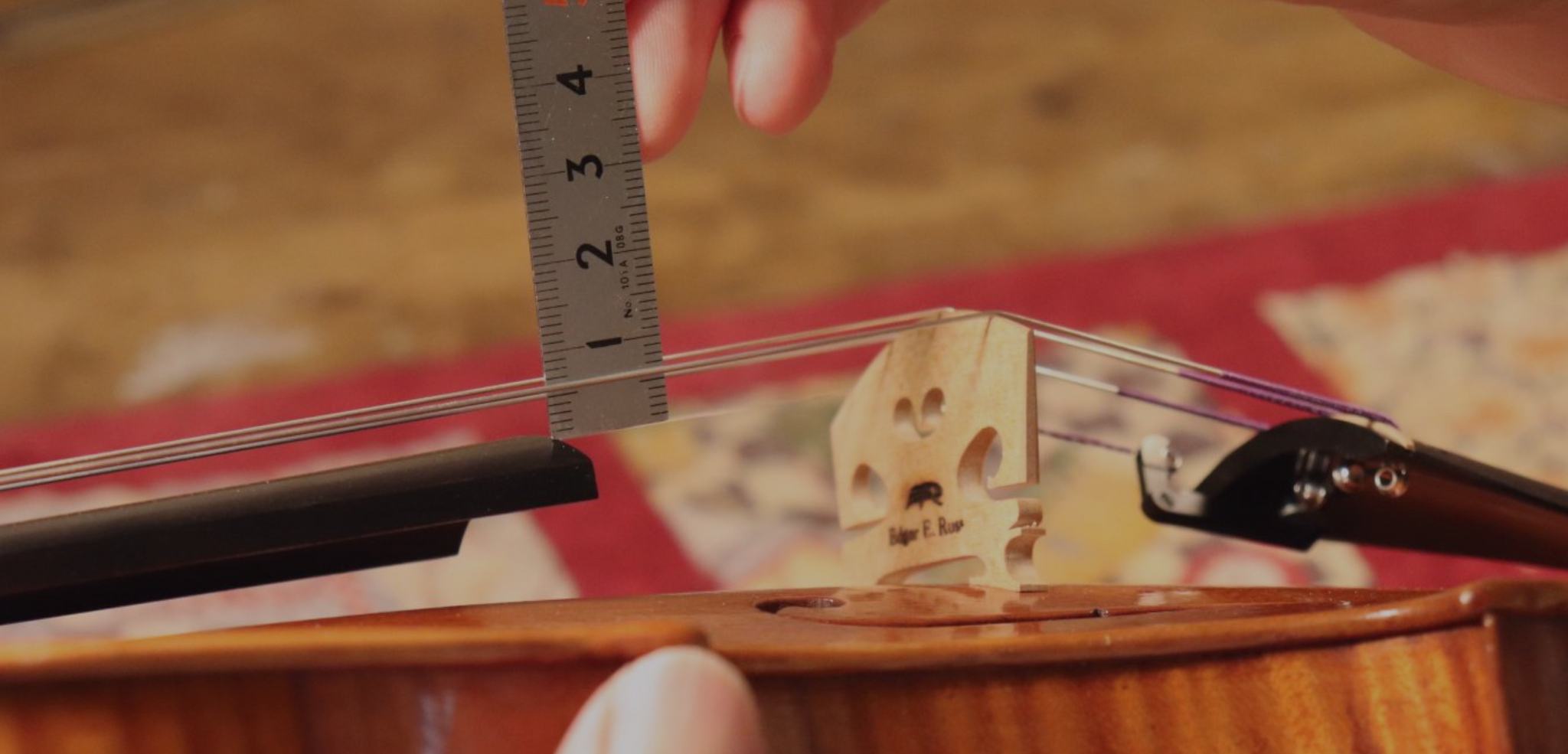
Understanding String Height (Action)
String height, or action, refers to the distance between strings and fingerboard. This measurement directly affects:
-
Playing comfort and finger pressure required
-
Intonation accuracy in higher positions
-
Speed of technical passages
-
Tone quality and string clearance
-
Risk of buzzing from low action
Optimal string height balances playability with sound quality. Too low causes buzzing and poor tone, while too high creates difficult playing conditions and intonation problems.
Factors Affecting String Height
Multiple setup elements influence final string height:
Bridge Height: Primary determinant of overall action height Nut Slots: Affect string height in lower positions Fingerboard Condition: Wear, warping, or improper planing affects string clearance Neck Angle: Structural element affecting string height across the instrument String Type: Different strings have varying tension and diameter characteristics
Professional setup addresses all these factors to achieve optimal playing action.
Standard String Height Measurements
Professional setup follows established string height standards:
At the Fingerboard End (12th fret position):
-
E string: 3.0-3.5mm
-
A string: 3.0-3.5mm
-
D string: 3.5-4.0mm
-
G string: 4.0-4.5mm
At the Nut:
-
All strings: 0.5-1.0mm above fingerboard
These measurements provide starting points, with final adjustments made based on individual instrument characteristics and player preferences.
The Interplay of Setup Components
How Bridge, Soundpost, and String Height Work Together
Violin setup components work as an integrated system. Changes to one element affect others:
Bridge Adjustments influence:
-
String height across the fingerboard
-
Soundpost pressure and positioning
-
Overall tonal balance and projection
Soundpost Changes affect:
-
String balance and individual string response
-
Overall volume and projection capabilities
-
Tonal character from warm to brilliant
String Height Optimization impacts:
-
Player comfort and technical ability
-
Intonation accuracy
-
Sound production and bow response
Professional setup considers these interactions, making coordinated adjustments for optimal overall performance.
The Role of Quality Wood in Setup Success
Even the finest setup work cannot overcome poor wood quality in the instrument itself. Premium wood construction provides the foundation that allows expert setup to achieve exceptional results. Understanding how different wood species and quality grades affect sound helps you appreciate why setup optimization can vary dramatically between instruments. Our detailed guide on Understanding Violin Wood: How Spruce and Maple Affect Tone and Projection explains how wood characteristics influence the effectiveness of setup adjustments.
Professional Setup Process and Timeline
Initial Assessment
Professional violin setup begins with comprehensive instrument evaluation:
-
Current setup measurement and documentation
-
Wood condition and structural assessment
-
Player needs and style requirements
-
Instrument potential evaluation
-
Repair requirements identification
Setup Procedure Steps
Complete violin setup follows systematic procedures:
-
String removal and cleaning
-
Bridge fitting and positioning
-
Soundpost adjustment and fine-tuning
-
Nut slot optimization if needed
-
String installation and initial tuning
-
Final adjustments and testing
-
Player consultation and refinement
Quality setup work requires multiple sessions, allowing wood to settle between adjustments and ensuring optimal results.
Timeline Expectations
Professional violin setup typically requires:
-
Initial consultation: 30-60 minutes
-
Setup work: 2-4 hours over multiple sessions
-
Final adjustments: 30-60 minutes after settling period
-
Total timeline: 1-2 weeks for complete optimization
String Selection and Setup Optimization
The relationship between string choice and setup optimization cannot be overstated. Different string types respond differently to identical setup configurations:
Synthetic Core Strings typically require specific bridge and soundpost adjustments to maximize their warm, complex tonal characteristics.
Steel Core Strings often perform best with setup configurations that enhance their natural brilliance while controlling potential harshness.
Gut Strings demand expert setup work to achieve their legendary tonal qualities while maintaining stable tuning and response.
Understanding how string selection influences optimal setup helps you make informed choices about both components. Our comprehensive resource Choosing Violin Strings: Synthetic Core vs. Steel vs. Gut String Comparison provides detailed information about how different string types interact with various setup configurations.
Maintaining Your Violin Setup
Regular Maintenance Requirements
Violin setup requires ongoing attention to maintain optimal performance:
Seasonal Adjustments: Climate changes affect wood movement, potentially requiring soundpost and bridge adjustments.
Bridge Monitoring: Bridge feet can warp or shift, requiring repositioning or replacement.
String Changes: New strings may require minor setup adjustments for optimal performance.
Wear Assessment: Regular inspection identifies wear patterns requiring professional attention.
When to Seek Professional Help
Several signs indicate the need for professional setup work:
-
Noticeable sound quality changes
-
Playing difficulty increases
-
String buzzing or unclear notes
-
Intonation problems in higher positions
-
Seasonal performance variations
-
After string type changes
-
Following any repair work
Setup Considerations for Different Skill Levels
Student Violin Setup
Student instruments require setup that prioritizes:
-
Easy playability to encourage practice
-
Forgiving action that accommodates developing technique
-
Durability to withstand heavy use
-
Clear sound production across all strings
-
Stable tuning for consistent practice sessions
Professional Violin Setup
Professional instruments demand setup optimized for:
-
Maximum tonal complexity and harmonic richness
-
Exceptional projection for performance situations
-
Responsive dynamics for expressive playing
-
Precision intonation for professional standards
-
Stability across varying performance conditions
The Economics of Professional Setup
Investment Value
Professional violin setup represents exceptional value:
-
Immediate improvement in sound and playability
-
Extended instrument life through proper adjustment
-
Enhanced practice efficiency with better playability
-
Performance confidence from reliable instrument response
-
Resale value maintenance through proper care
Setup vs. Instrument Upgrades
Often, professional setup of a current instrument provides better value than purchasing a new instrument. Expert setup can reveal hidden potential in instruments that seemed mediocre with poor adjustment.
Finding Your Optimal Setup
Every violinist has unique needs based on:
-
Playing style and repertoire preferences
-
Physical considerations including hand size and playing posture
-
Performance venues and acoustic requirements
-
Musical goals and professional aspirations
Working with experienced violin technicians helps identify your ideal setup configuration. Our collection of professional full-size violins includes instruments that have received expert setup work, demonstrating how proper adjustment maximizes each violin's potential.
The Future of Violin Setup
Modern technology provides new tools for setup optimization:
-
Digital measurement systems for precise adjustments
-
Acoustic analysis software for objective tonal assessment
-
Climate monitoring systems for environmental stability
-
Advanced materials for bridges and soundposts
However, the fundamental principles of violin setup remain unchanged. The combination of scientific understanding and artistic sensitivity continues to define exceptional setup work.
Proper violin setup transforms your instrument from a collection of wood and strings into a responsive musical partner. Whether you play a student violin or a professional instrument, expert setup work unlocks your violin's potential and enhances every aspect of your musical experience.
